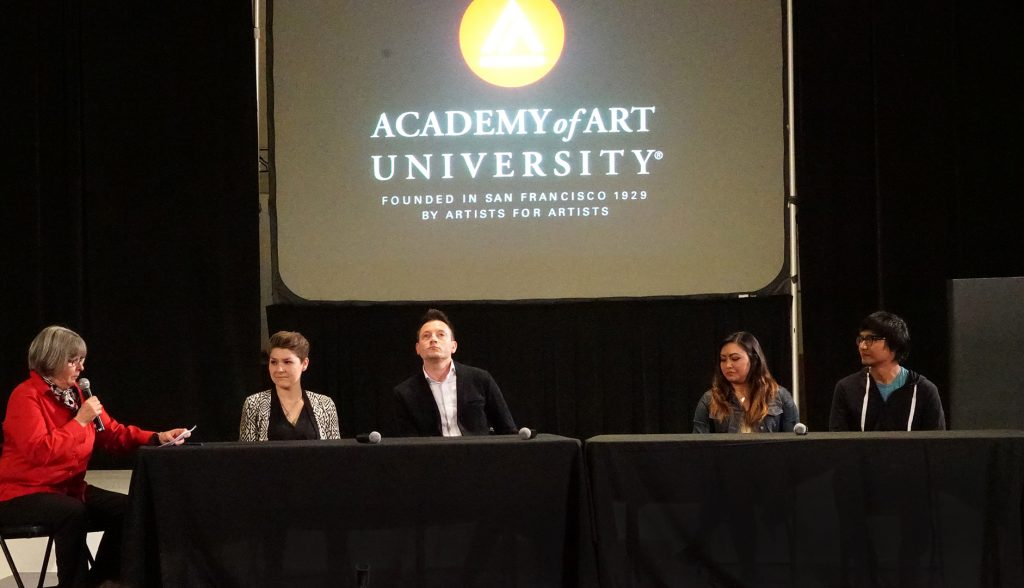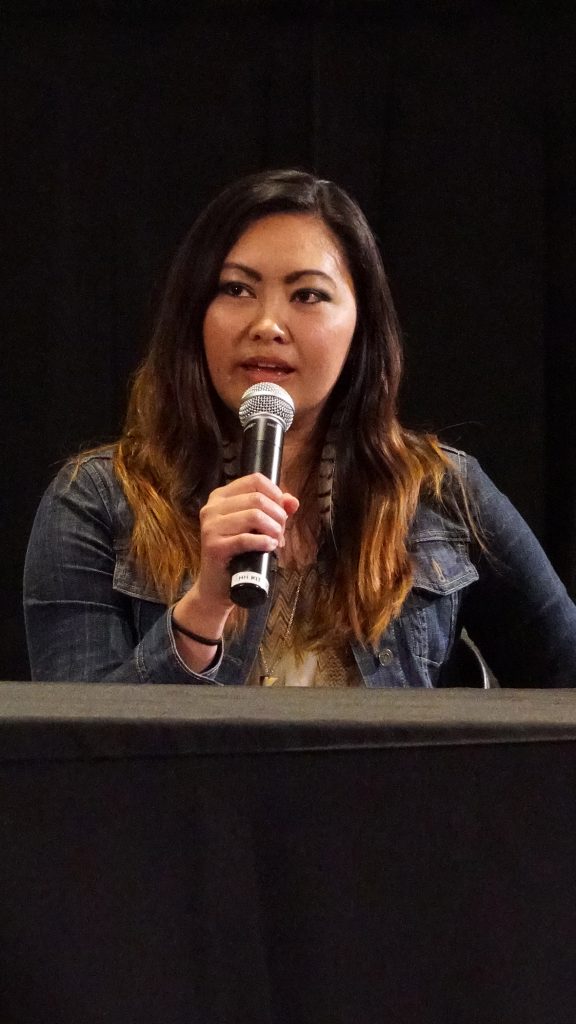Originally written after speaking on an alumni panel at the Academy of Art University in July 2016. Updated and republished with reflection. Photo taken at the Academy of Art University during the Alumni panel. My friends pictured to the right of me, Eugene Yanza, and Lawrence Valenti at the end.
I was recently invited to speak on an alumni panel at the Academy of Art University alongside a few other grads. We shared stories about our first jobs and how we hustled our way into creative careers. When I moved to Los Angeles in 2013, I lived the freelance life for over two and a half years—jumping from one contract to another, calling recruiters nonstop, and following every promising lead I could find. I would sign up with tons of creative staffing agencies and would constantly send emails to stay top of mind.
It wasn’t easy, but it gave me grit.
I even wrote a guide back then on LinkedIn called “How to Find Work as a Freelance Illustrator/Designer” (subscribe below so I can send you the link!)—I outline seven steps that helped me land consistent freelance work. The freelance path isn’t for the faint of heart, but it taught me how to stay creatively hungry. And truthfully, I thrived on that hunger. It gave me purpose and drive in ways that traditional 9–5 jobs never did.
Sure, I’ve had full-time gigs before. One of my earliest favorite jobs was as an illustrator/product designer for Hurley Accessories in San Diego back in 2007 designing handbags, backpacks, and luggage in Illustrator—I worked hard to earn that role through a design test. But I’ve always found it hard to stay creatively fulfilled in long-term, stable roles unless they really challenged me.
Over time, I worked with some amazing companies in LA:
Hasbro Studios, Skechers USA, William Morris Endeavor, and Fuhu Inc., just to name a few. These roles pushed my thinking and creativity in ways that helped me grow. But I’ve always been drawn to the freedom that freelance gives—the space between jobs to make my own art, reconnect with my creativity, and evolve on my own terms.

Creative Discipline Meets Flow
Art is a sacred act for me. I can’t always force it into rigid structures or corporate deadlines. Yes, I believe in setting goals and having discipline—but I also believe in giving myself space to grow, explore, and evolve.
I’ve seen so many young artists get stuck in cycles of impatience or self-judgment. But art—real art—comes from deep within. It takes time. It takes trust.
I create because I’m called to. Because it connects me to something greater. And that process is spiritual. It’s intuitive. It’s powerful.
Don’t Let Others Define Your Path
One thing I shared on that panel was this: sometimes the people closest to us—family, friends—might not understand this path. They might push us toward what feels “safe.” The 9–5. The steady paycheck. The retirement plan.
And that’s okay—they mean well.
But it’s also okay to try everything and discover what feels right for you. Some of us thrive in companies. Others need the open road. I always say: try both. Explore. Tune in. The important thing is to stay aligned with what brings you joy and purpose.
Because here’s the truth:
We are limitless. We hold so much creative power within us. And if we’re brave enough to follow our vision, we can build a life that gives us both freedom and fulfillment.

A Message to the Next Generation
It meant the world to me when younger students came up to me after the panel and said that my story resonated with them. I didn’t find art until my early 20s. I had my son at 21. It wasn’t always easy, but I had a vision—and that was enough to keep me going.
So here’s what I’ll say to anyone starting out:
- Embrace your own journey. It may not look like anyone else’s—and that’s the point.
- Don’t let fear or self-doubt cloud your vision. You know what you want deep down.
- Find a mentor. I had one before grad school who changed my life.
- Surround yourself with artists who believe in you.
- Practice. Have discipline. Stay in flow.
- Document Your Work and Your Thoughts. Keep a journal or a sketch book and reflect.
- Be patient with yourself. Your creative path unfolds at the pace it’s meant to.
When you finally find your footing, you’ll realize you were building your foundation all along. And that foundation? It will be so strong that nothing can shake it.
